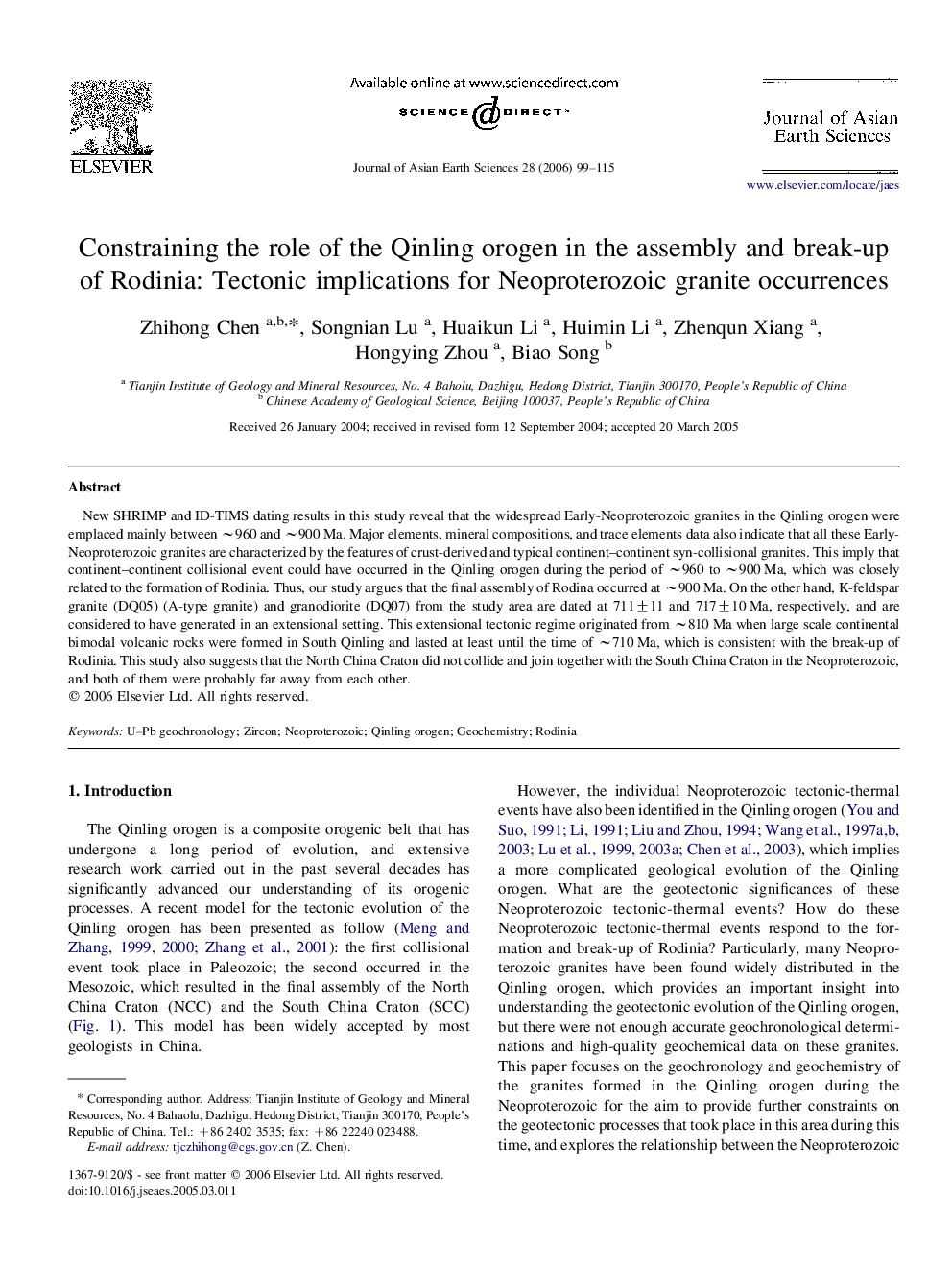| کد مقاله | کد نشریه | سال انتشار | مقاله انگلیسی | نسخه تمام متن |
|---|---|---|---|---|
| 4732664 | 1356880 | 2006 | 17 صفحه PDF | دانلود رایگان |

New SHRIMP and ID-TIMS dating results in this study reveal that the widespread Early-Neoproterozoic granites in the Qinling orogen were emplaced mainly between ∼960 and ∼900 Ma. Major elements, mineral compositions, and trace elements data also indicate that all these Early-Neoproterozoic granites are characterized by the features of crust-derived and typical continent–continent syn-collisional granites. This imply that continent–continent collisional event could have occurred in the Qinling orogen during the period of ∼960 to ∼900 Ma, which was closely related to the formation of Rodinia. Thus, our study argues that the final assembly of Rodina occurred at ∼900 Ma. On the other hand, K-feldspar granite (DQ05) (A-type granite) and granodiorite (DQ07) from the study area are dated at 711±11 and 717±10 Ma, respectively, and are considered to have generated in an extensional setting. This extensional tectonic regime originated from ∼810 Ma when large scale continental bimodal volcanic rocks were formed in South Qinling and lasted at least until the time of ∼710 Ma, which is consistent with the break-up of Rodinia. This study also suggests that the North China Craton did not collide and join together with the South China Craton in the Neoproterozoic, and both of them were probably far away from each other.
Journal: Journal of Asian Earth Sciences - Volume 28, Issue 1, 15 October 2006, Pages 99–115